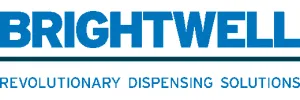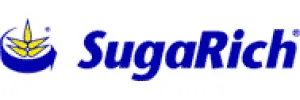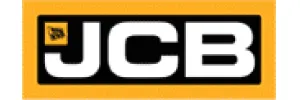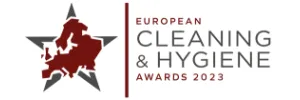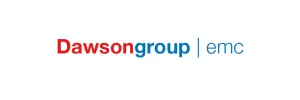News & Insights
Read the latest news from us and our clients across the globe

Posted on 31 January 2014 by adtrak.admin
Refuse collection vehicles or savvy communication tools?
The antiquated perception surrounding the ‘dirty’ role of a ‘bin man’ unfortunately still exists to some degree, admits Lawrence Craig, managing director of vehicle graphics innovator, Spedian. But to what extent are modern refuse collection vehicles helping to change this unjust view?
When asked to name a career path that enables an individual to make a difference through their work – by instigating positive change – what would you say? Answers may typically include teaching, the police force or the nursing profession, but how many would highlight refuse collection?
Unfortunately refuse collection is still seen by many as a dirty job, with some people even going so far as to consider the role of a ‘bin man’ as second rate employment. However, this undue viewpoint is, in fact, incredibly archaic. Granted, such individuals may not be saving lives, but they are providing an important service. In many respects they help to educate, protect our quality of life and safeguard the world in which we live. So where do the anomalies lie?
A generational difference?
The younger generation of today – children who are growing up learning about the importance of recycling in school – are perhaps more likely to have a more positive view of the refuse collection occupation. In many instances, their environmental consciences will be more alert because they are growing up in an era where recycling really matters. For them, refuse collectors are continuing the recycling efforts that they themselves have kick-started in school or at home.
Yet there needs to be more a more widespread appreciation for the efforts that refuse collectors go to, to make our country a ‘greener’ place. They work hard, adhering to carefully planned schedules whatever the weather, to collect the ‘waste’ that households and businesses continue to produce. But to what extent will these waste management professionals ever be acknowledged for the recycling champions that they are?
The value of the vehicle
Refuse collection vehicles are going some way to stimulating a shift in attitudes. Once viewed as merely smelly rubbish lorries, they are now increasingly utilised by local authorities and waste management firms as valuable mobile assets. As well as providing a waste pick-up service, these vehicles and their operators are proving a visually integral part of the UK’s resource agenda.
What’s more, these clean, advanced and energy-efficient technologies are helping to gradually change the image of refuse collection. The fact that these vehicles are state-of-the-art helps to quash the myths that the industry is unrefined and outdated.
Communicate, communicate, communicate
With often restricted in-house resources, local authorities are also increasingly utilising these vehicles as communication tools that can create dialogue with members of the public. These highly visible trucks navigate local neighbourhoods on a daily basis and so are seen by the ‘audience’ that councils need to talk to. They therefore provide a powerful, relevant and cost-effective marketing platform, within councils’ direct control.
When it comes to the graphic design and content of these communication messages, an intelligent approach can be adopted. The sides of the vehicles can be used to promote recycling and collection methods for instance, which educates households about what to recycle, how to do it and why it matters. Seasonal messages, or information about the council or waste management firm’s wider services, can also be incorporated.
The more ‘savvy’ of fleet or communication managers may even sell the advertising space on the side of these highly noticeable mobile units, to generate an additional revenue stream. Indeed it would be encouraging to see more consumer brands investing parts of their marketing budgets into such council initiatives. This collaborative approach to recycling would go some way to satisfying product manufacturers’ or retailers’ corporate social responsibility, whilst enabling them to engage with key customers of their own.
Additional system innovations
Whilst a growing number of people will acknowledge the hi-tech nature of the refuse vehicles themselves, very few would anticipate how much creativity goes into the side of these vehicles too. In the vehicle graphics sector for example, innovation is continuing apace to help support local authorities as they tackle ever-more stringent targets and budget constraints.
Graphics now exist in high definition and with a colourfast guarantee from all-weathering – a feature that is more important than many people will realise. It means the graphics will stay as clean as the vehicle, which helps to create the right impression and portray an image of quality, plus they will last longer. When combined with patented technologies that create increased suction and panel adherence according to the vehicle’s speed – creating a stronger, tear-resistant solution – this further protects the longevity of the investment.
The environmental link
Such systems are also becoming increasingly lighter – weighing as little as 35g per linear metre. This improves fuel efficiency and saves money, plus the organisation’s wider environmental credentials are enhanced.
Acknowledgement of this desire for sustainability, coupled with on-going cost pressures, has also driven the more revolutionary of vehicle graphics system suppliers to develop fully reusable products too. This means that not only is the system straightforward to install and remove – without causing damage to the vehicle substrate – but the communication panels can also be refreshed with ease.
Councils and contractors therefore have the flexibility to interchange the messages and branding that they display. One local authority for instance, promoted free town centre parking on their refuse vehicles, over the Christmas period. Now the offer has expired, the panels have simply been rolled and neatly stored away, until they are next required – so the council does not have to re-invest in graphic redesign or reprinting. What’s more, the valuable freed-up space can again be used to champion sustainability in the local area and help improve recycling rates.
A joined-up approach speaks volumes
As advancements continue within the recycling and waste management arena, local authorities and waste management contractors can become so much smarter in their approach to business. These organisations, by their very nature, are trying to encourage households and businesses to adopt more sustainable ways of life. And now, by investing in the right product innovations and harnessing the strategic value of the resulting opportunities, they can revolutionise the environmental credentials of their own operations at the same time.
Councils often come under fire for their approach to the UK’s waste agenda, their allocation of budgets and their dialogue with local communities. However, this goes to show that many local authorities are in fact investing in revolutionary technologies to improve the functionality, appearance and added-value of their mobile assets.
Published in Recycling & Waste World – January 2014
Experts in Public Relations Services & Communications Management
Our ServicesGenuine industry specialists in cleaning and hygiene, environmental and recycling, and facilities management
Our Sectors
